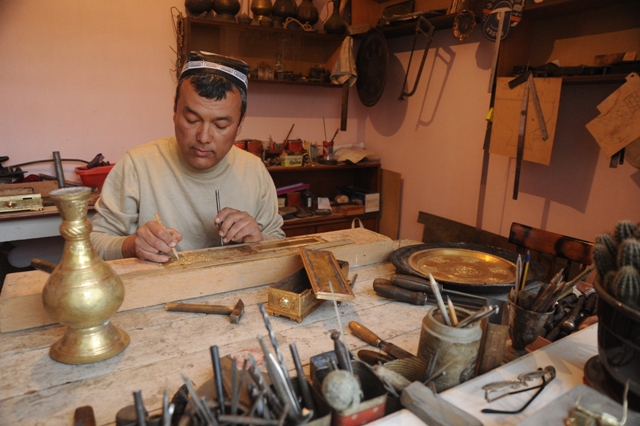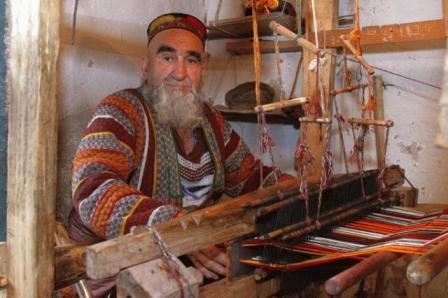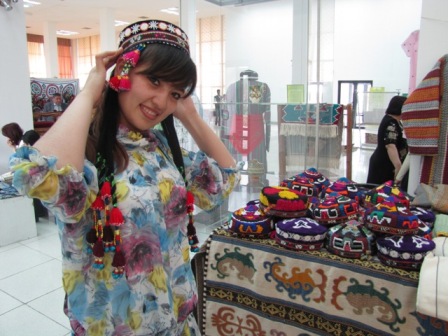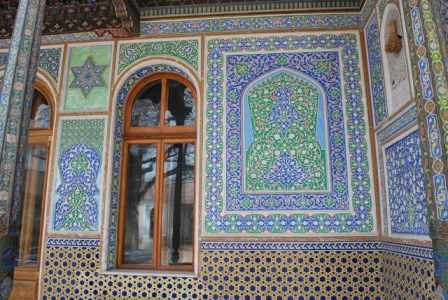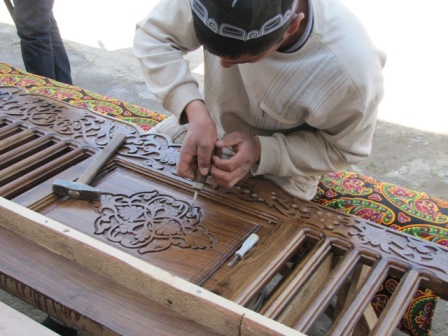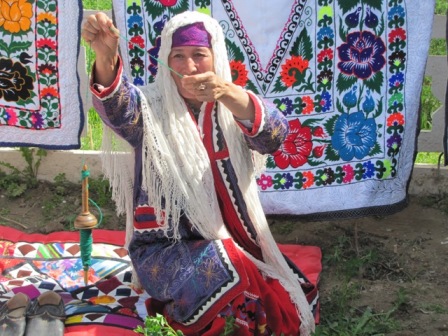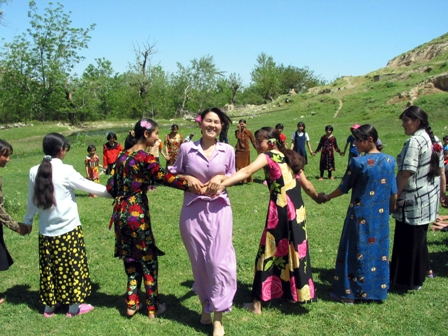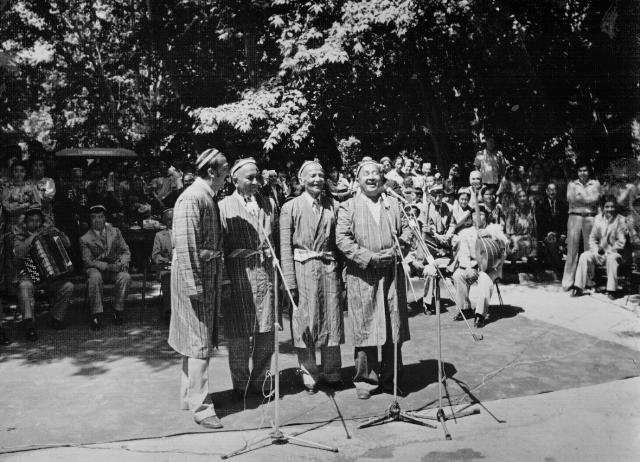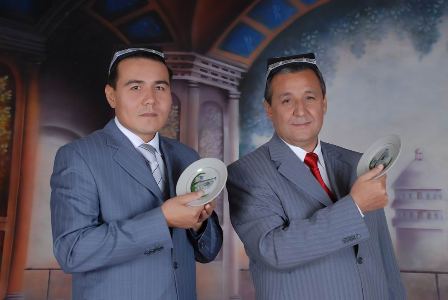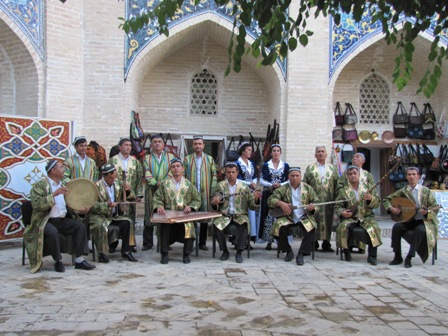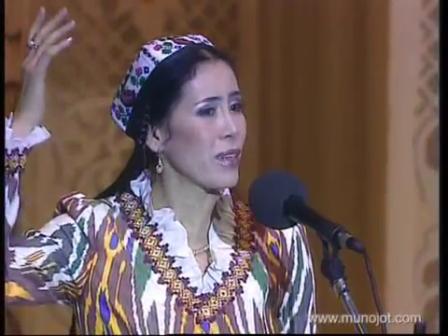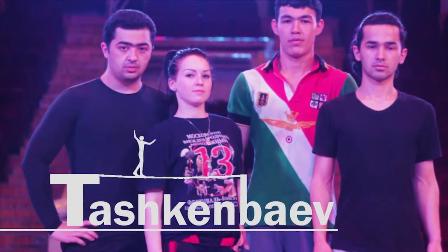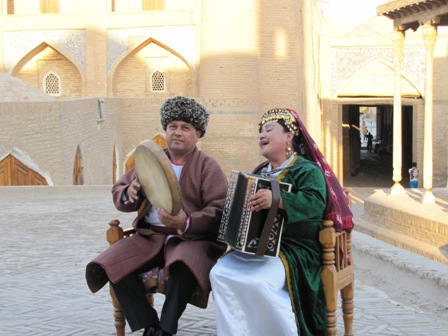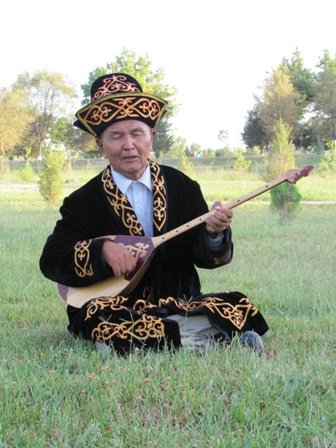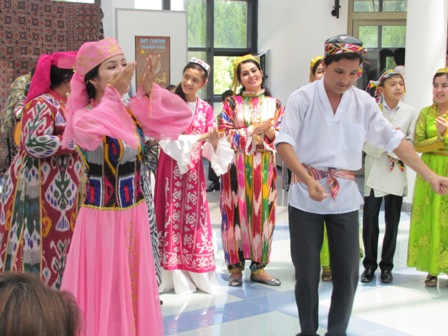|
Domain: Traditional Craftsmanship
The highest form of urban craft was gold embroidery. Based on the findings of archaeologists and written sources, it could be told that it has ancient roots in the territory of Uzbekistan. |
|
Domain: Traditional Craftsmanship
One of the most ancient types of applied arts of Uzbekistan is the art of metal working. This fact is testified thanks to the unique bronze items from Sopolitepa and Jarqoton ancient sites (related to the XV century B.C.), ritual cauldron of saka people (related to the V-IV century B.C.) as well as other historical and archaeological artifacts. |
|
Domain: Traditional Craftsmanship
One of the most labor-intensive artistic crafts in Uzbekistan is carpet-making, the traditions of which go back to the ancient times. It should be noted that carpet-making and felt-making, for which wool of ship and skin of camel served as primary raw materials, evolved predominantly in the cattle-breeding environment (i.e. in the nomadic environment). |
|
Domain: Traditional Craftsmanship
Skullcap embroidery was developed among Iranian and Turkic peoples since olden times. Skullcaps make up part of the national dresses of the peoples of Turkestan, especially of Uzbeks and Tajiks. They differ in terms of form and décor from one nation to another. The same can be told with regard to the traditions of their creation. |
|
Domain: Traditional Craftsmanship
Puppet-making, like folk applied arts and other types of art, emerged as a result of human's observations of nature, environment and objective reality and resulting wonder, fear and admiration. A good example could be the clay figurines of humans, animals and fantasy-imaginary creatures, found during many archaeological excavations in Uzbekistan. |
|
Domain: Traditional Craftsmanship
One of the most ancient and exceptionally interesting types of applied arts of Uzbekistan is artistic ceramics. In terms of execution technique it is divided into two types, i.e. unglazed and glazed ceramics. Though, unglazed moulded ceramics has more ancient origins. |
|
Domain: Traditional Craftsmanship
Ganch carving is one of the most ancient types of architectural-decorative arts of Uzbekistan. The brightest examples of carved ganch of pre-Islamic period are wall panels in the palaces of Tuproq qala (located in Khoresm; related to the IV-V centuries A.D.) and Varakhsha (located near Bukhara; related to the VII-VIII centuries A.D.). The examples related to the early Islamic period are represented by carved ganch panels to be found in Afrosiyob (IX-XI centuries A.D.) and in the palace of Termez Shahs (XI-XII centuries A.D.). |
|
Domain: Traditional Craftsmanship
Distinguishing feature of this type of applied art in Uzbekistan is that masters (i.e. wood carvers) produced not only various household items and goods, but also participated in creation of carved wooden columns, doors and other elements of architectural significance. |
|
Domain: Traditional Craftsmanship
Beauty of Uzbek embroidery, ancient origins of its patterns and diversity of techniques applied indicate to the fact that this craft has passed a lengthy process of historical development, and has rich traditions. Due to fragility of materials (i.e. silk, cotton, wool) which were used in embroidery, only some samples reached our days. And these samples, in chronological terms, relate to the XIX and XX centuries only. |






